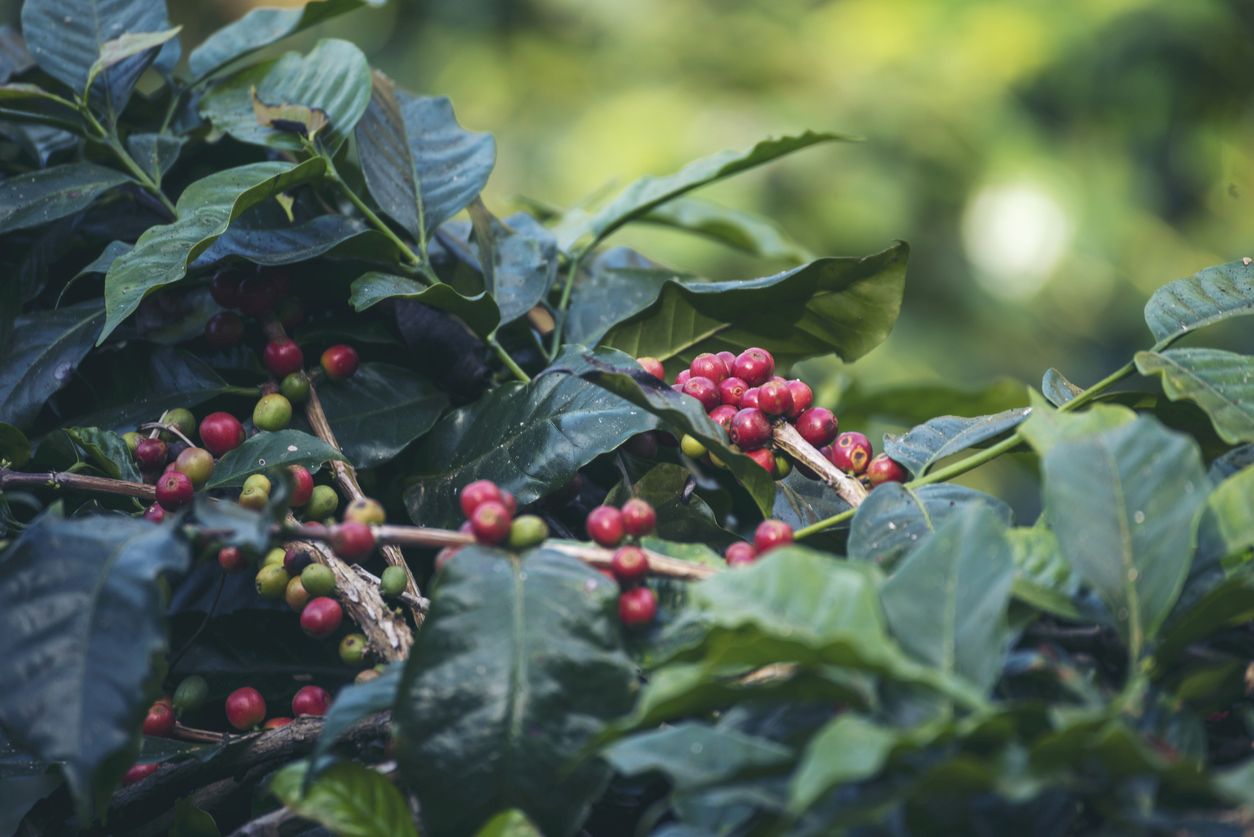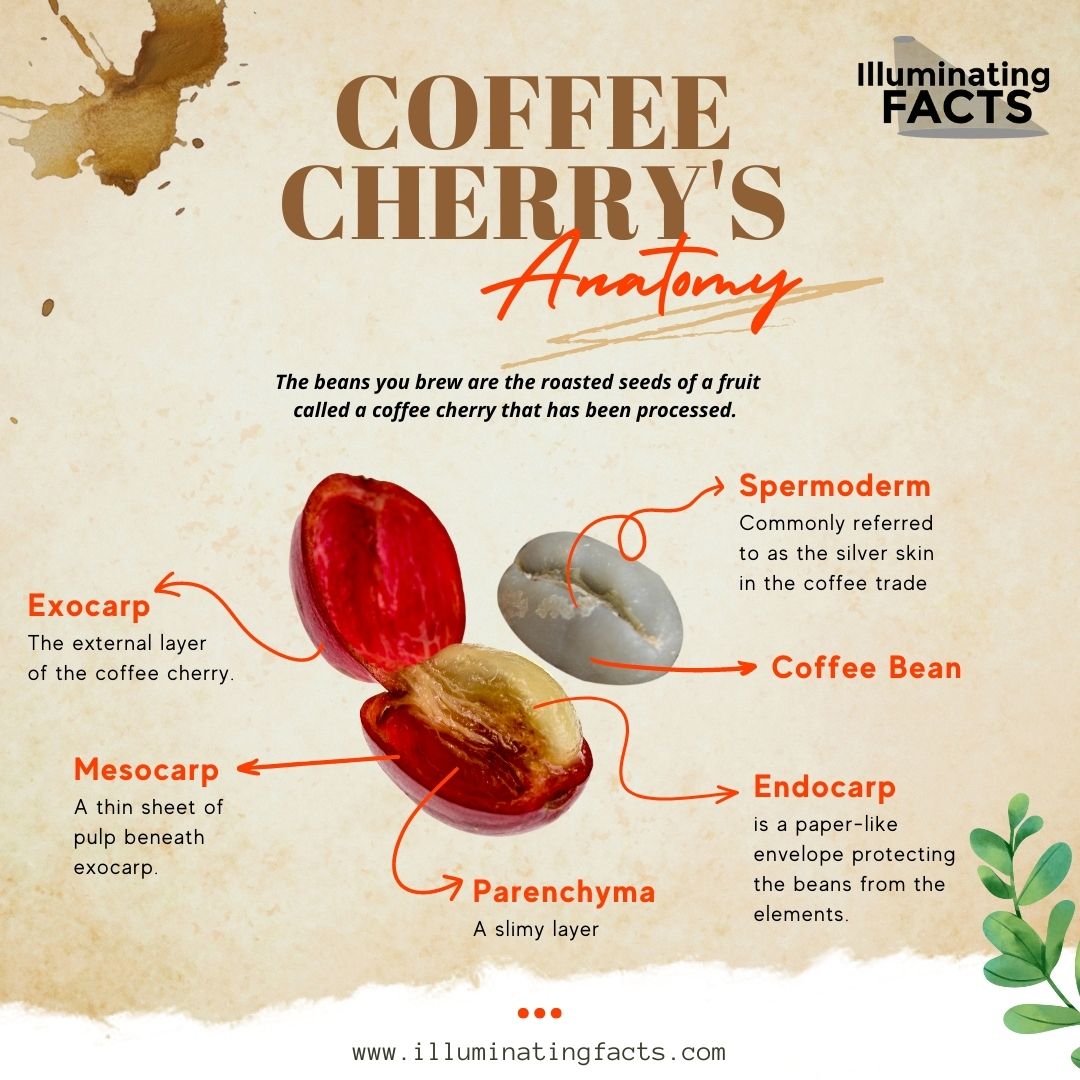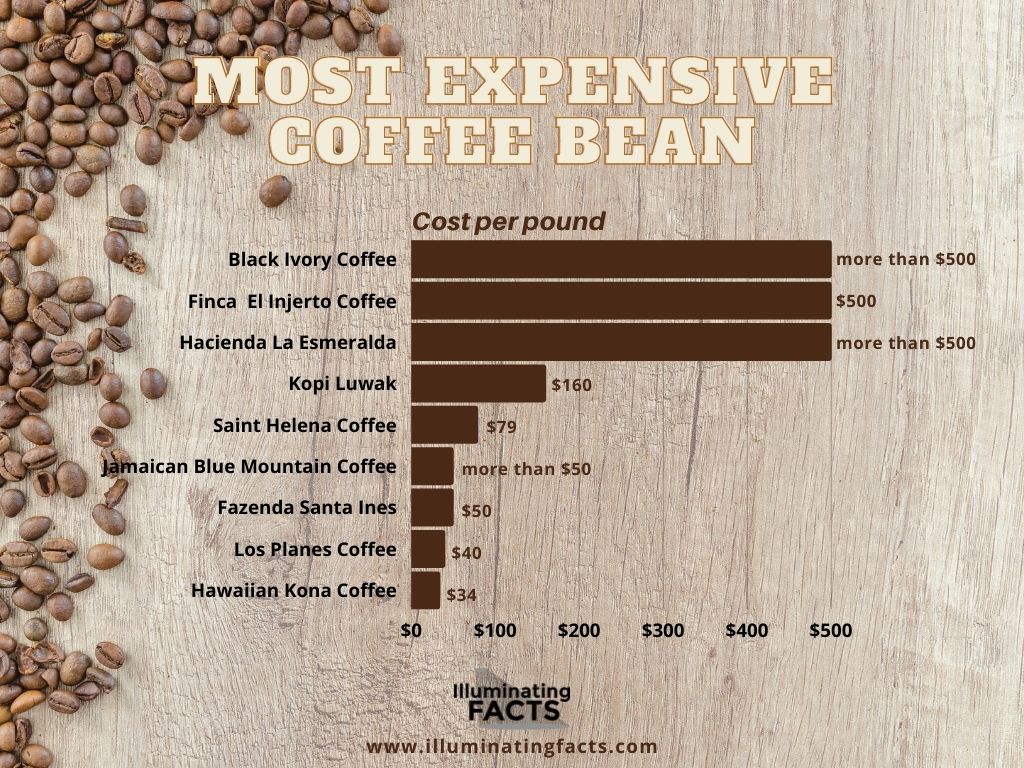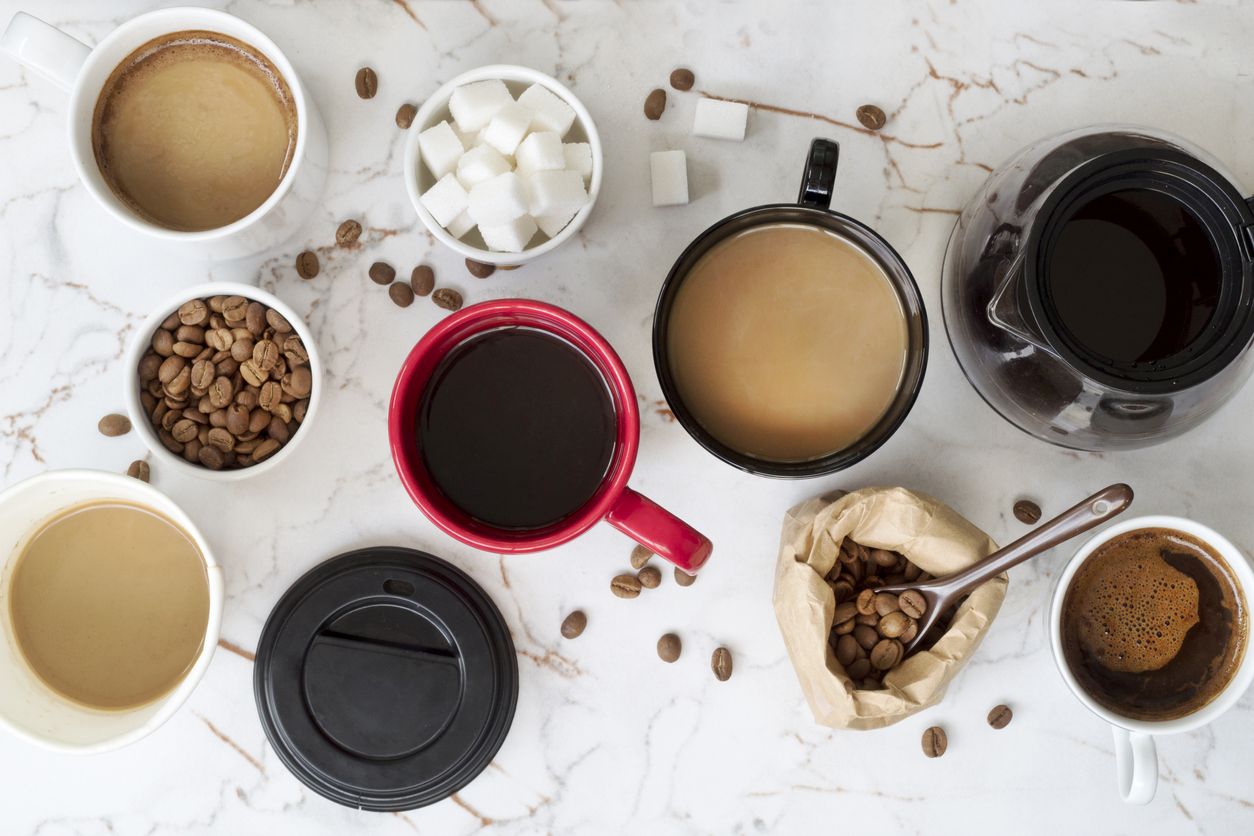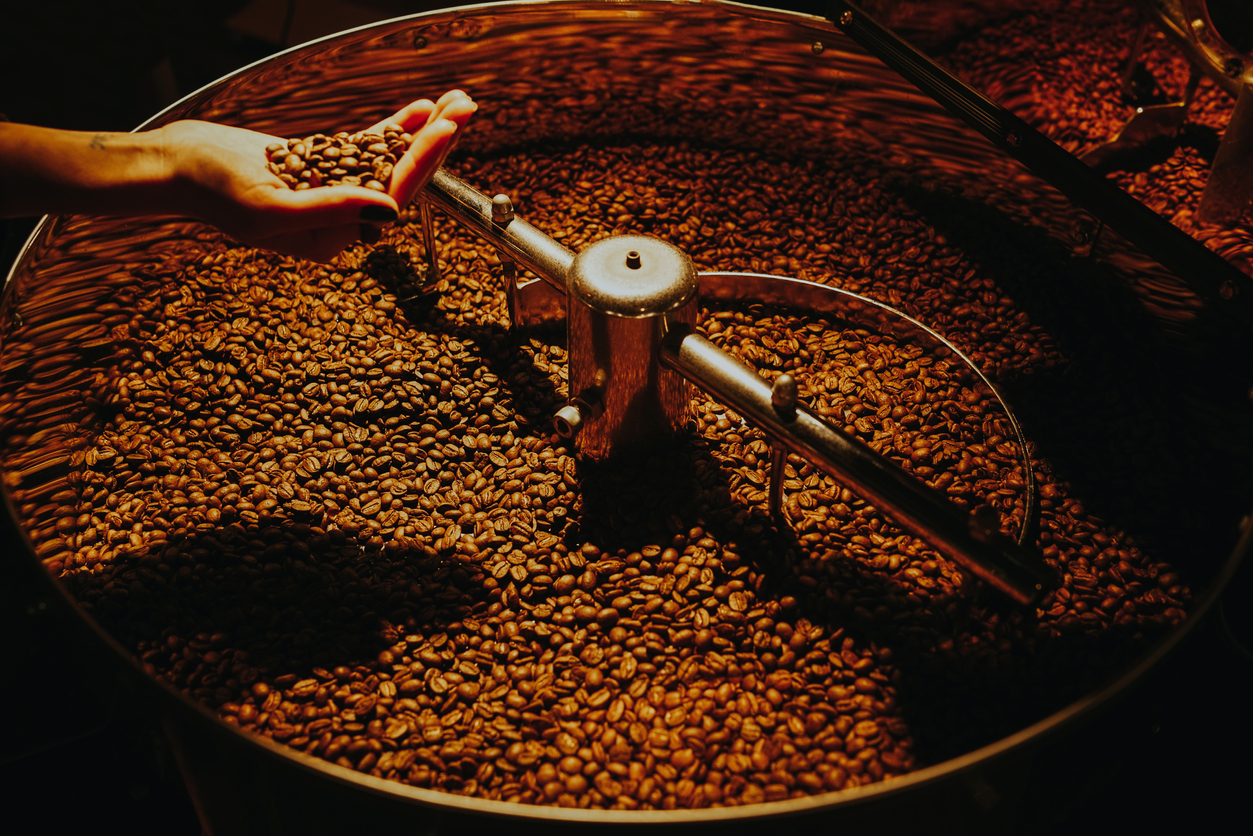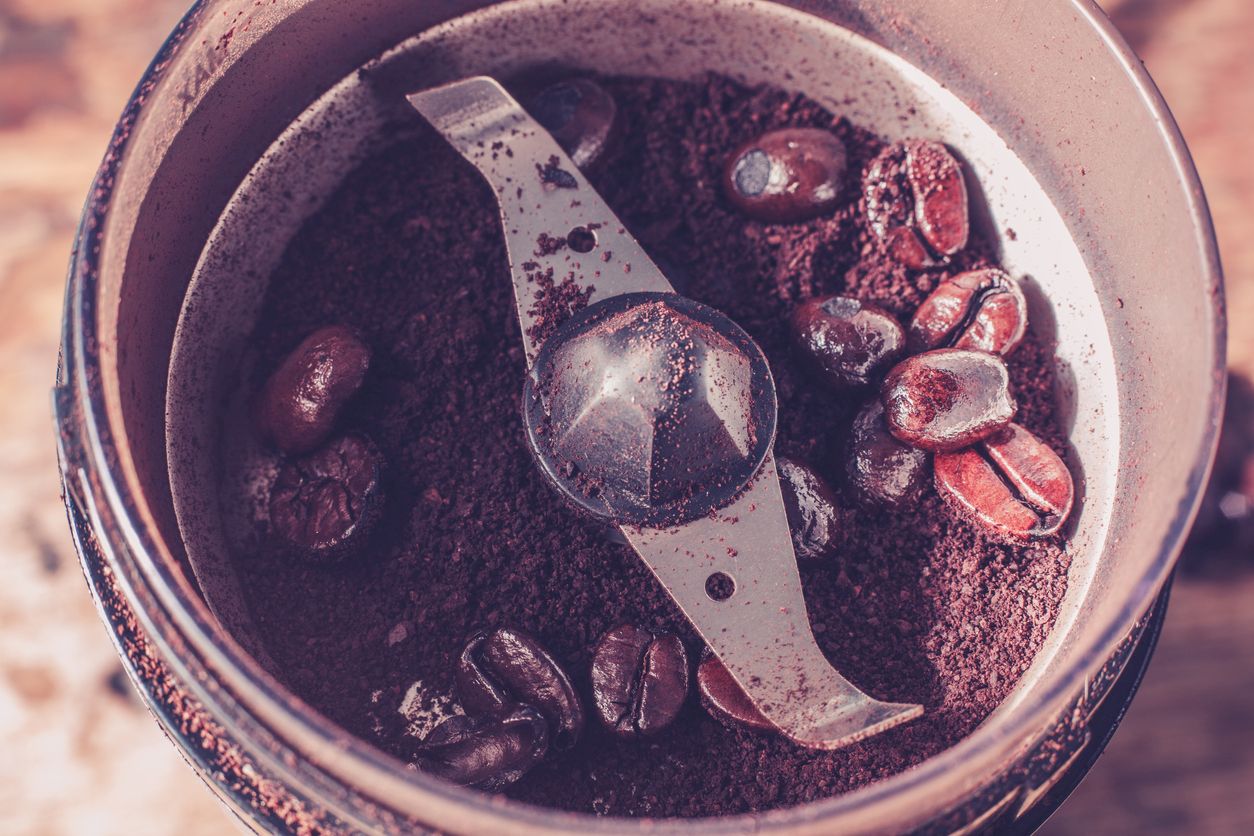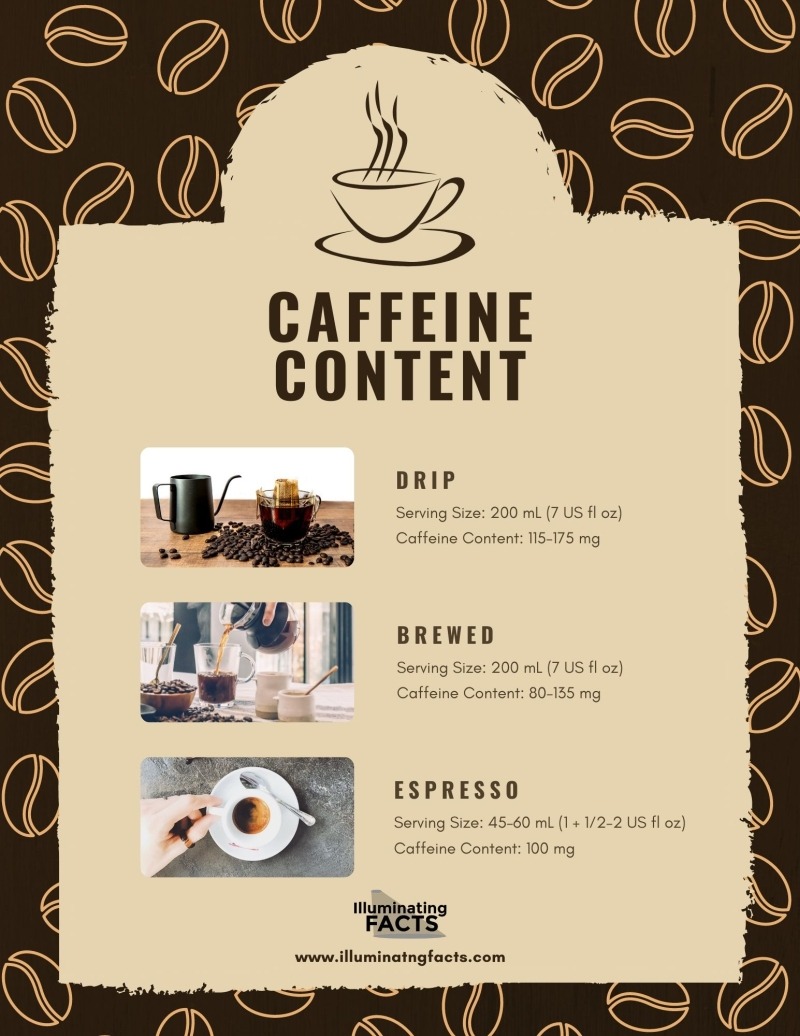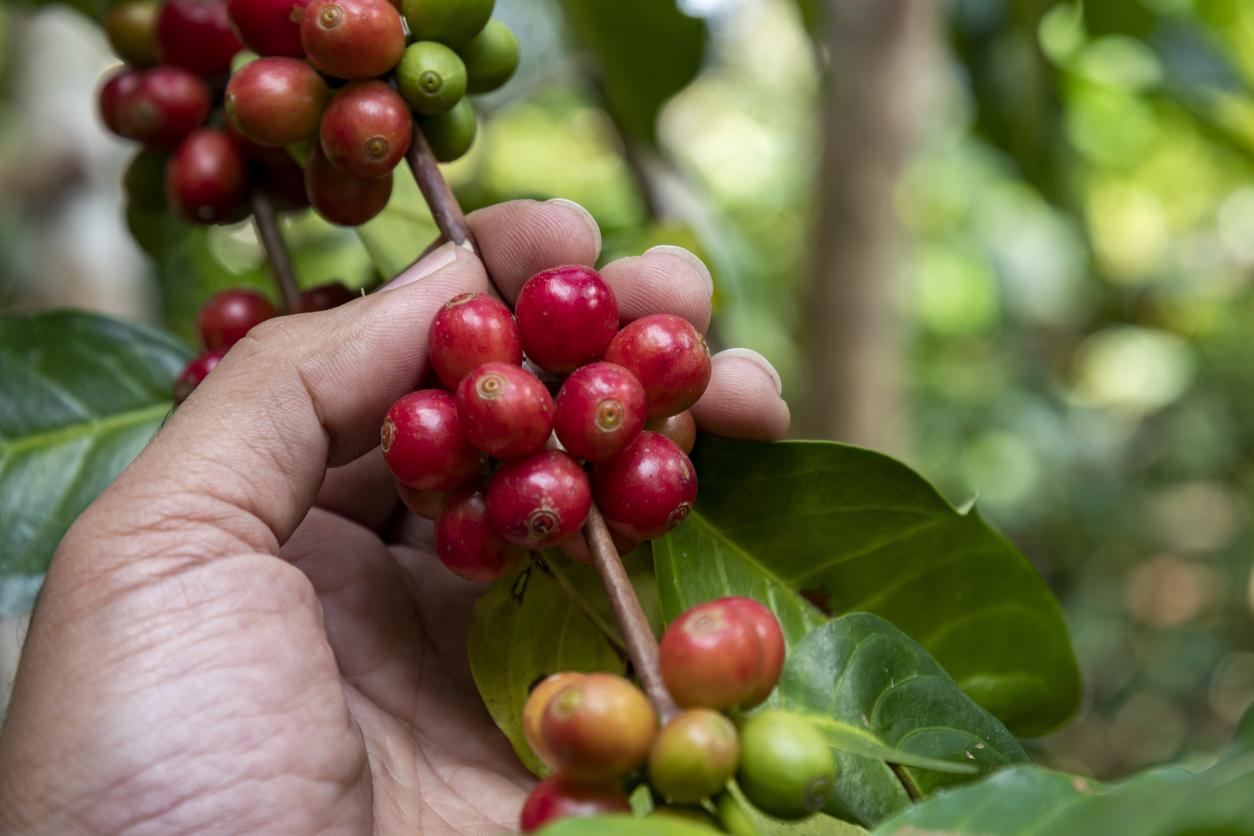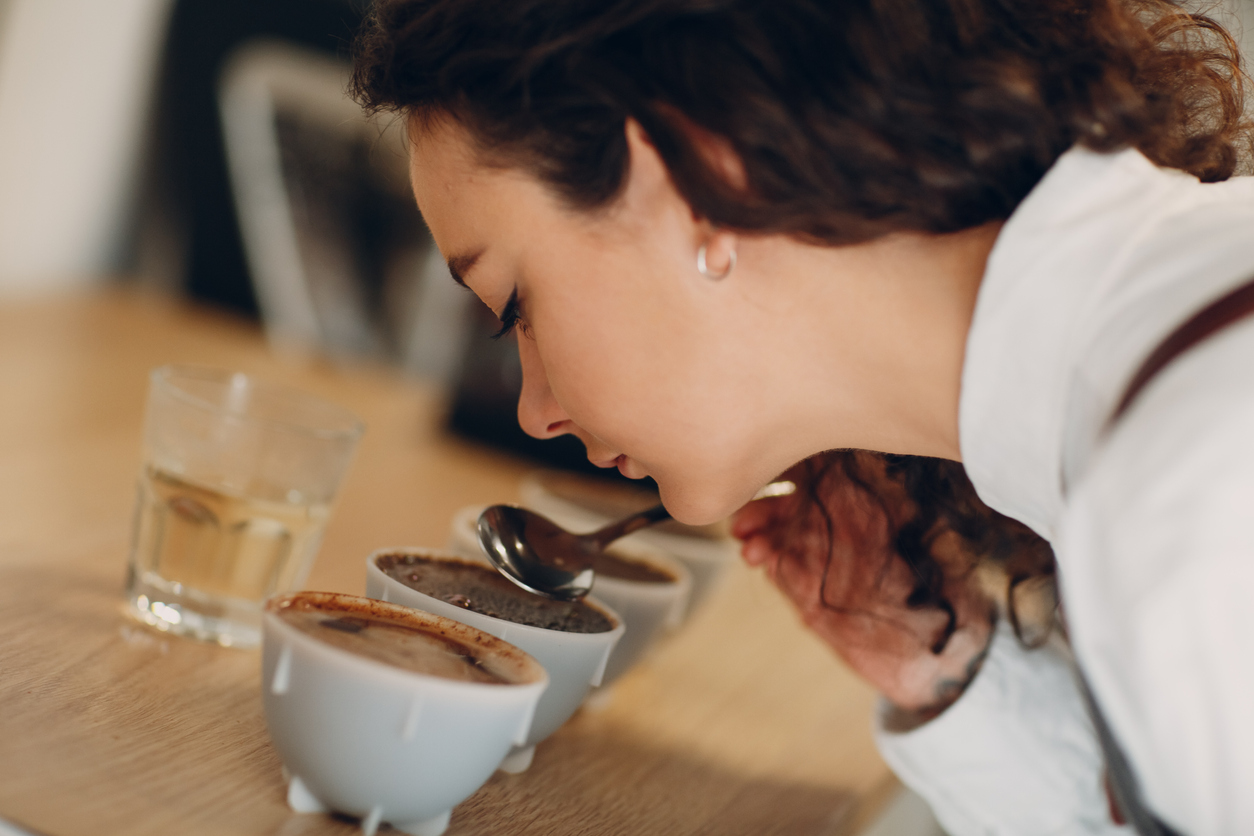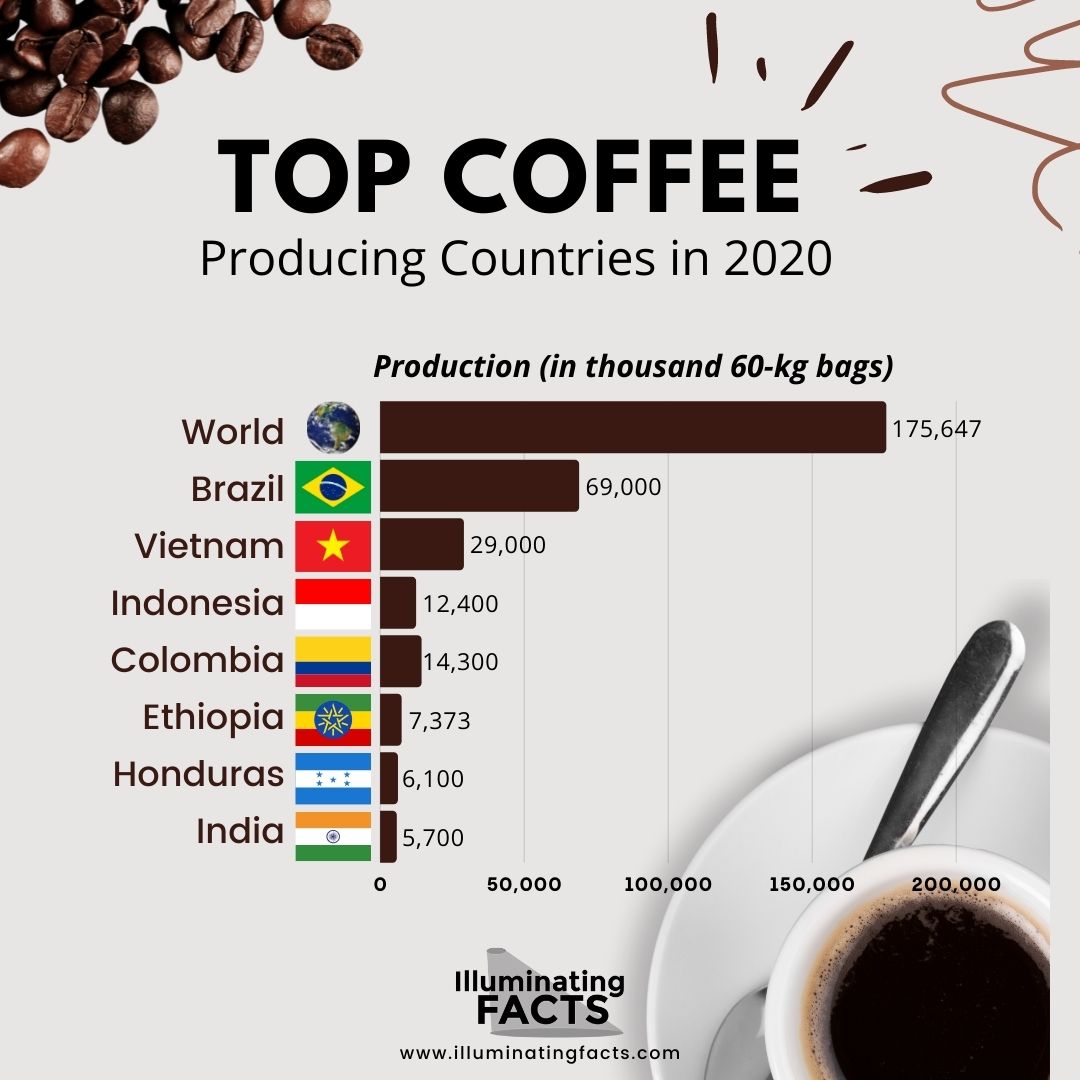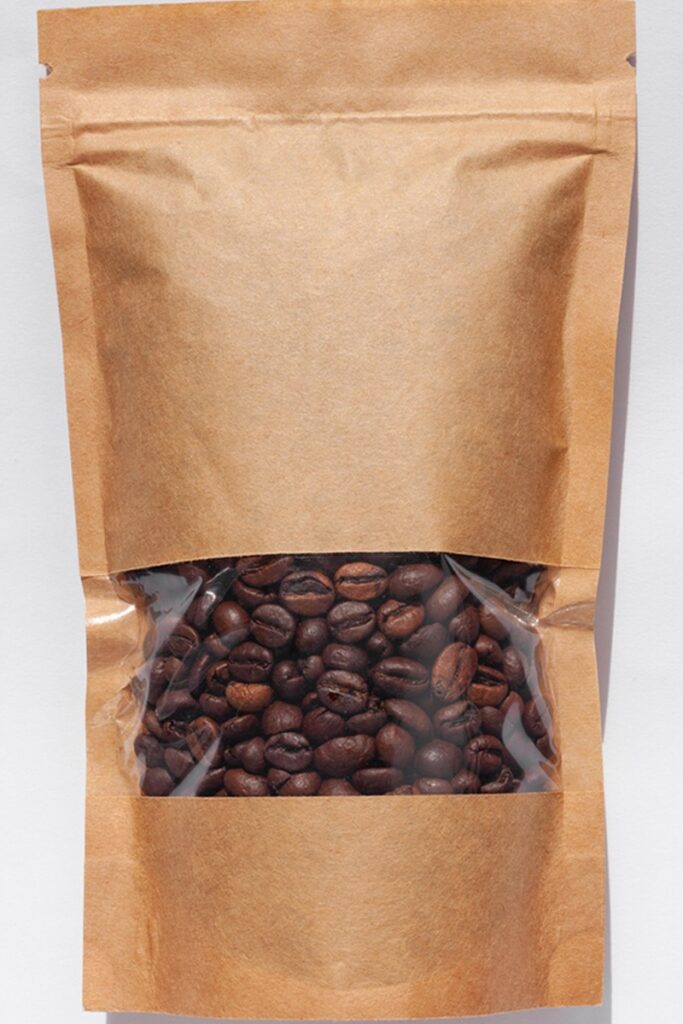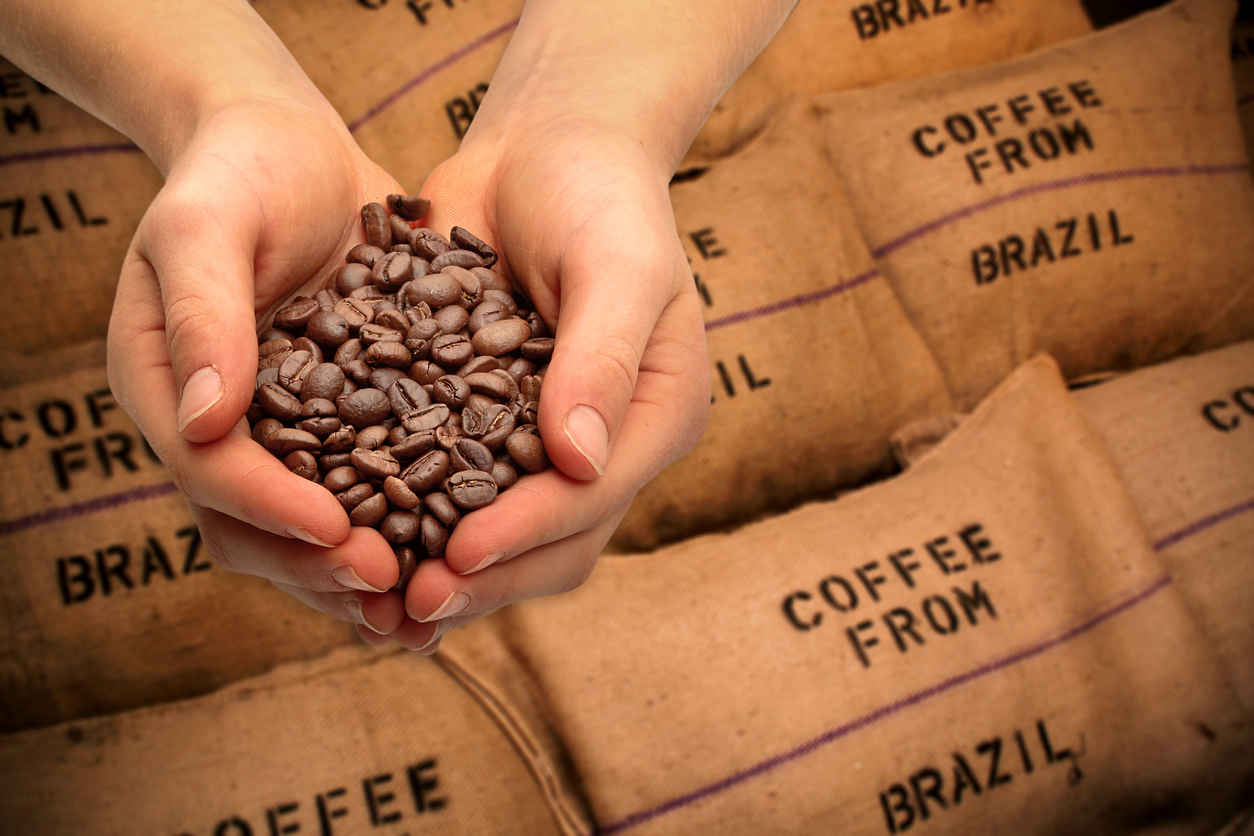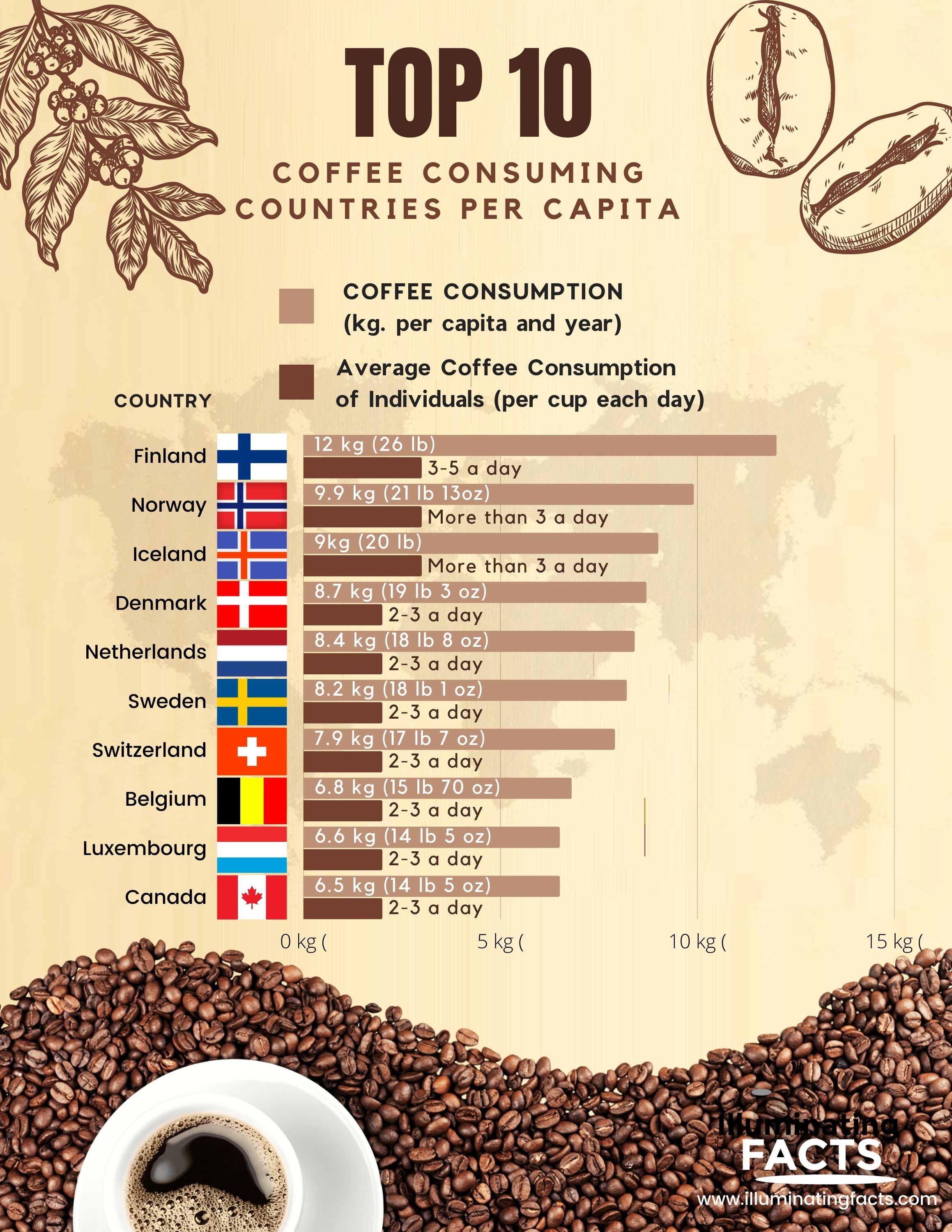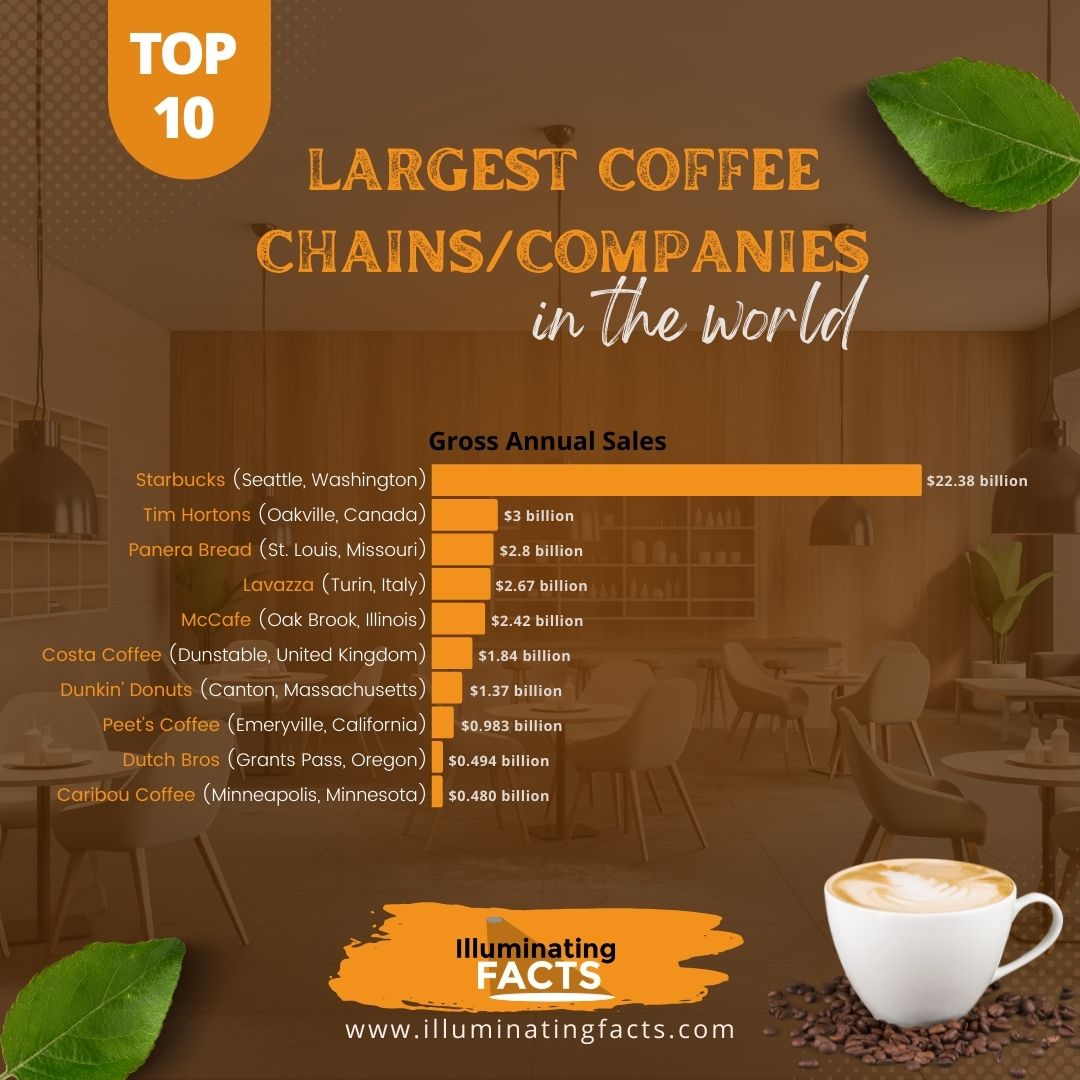Coffee is an important morning ritual for millions worldwide, and you probably don’t even think about it most of the time. Coffee drinkers worldwide consume more than 2.25 billion cups of the drink each day. But there’s a fascinating tale behind each sip of coffee, one that begins at the place where it was grown and concludes with the cup you choose to transport to your lips.
Coffee is a beverage made from the African-origin tropical evergreen coffee plant’s roasted and ground seeds. It is one of the world’s three most popular beverages, most profitable international commodities, and tea and water. Although coffee provides the base for many beverages, its appeal is mostly due to the energizing impact of caffeine, an alkaloid in coffee.
Almost most of the world’s coffee is produced by two species of coffee plant: C. canephora and Coffea arabica. Arabica is a gentler, more flavorful, more aromatic coffee than Robusta, the most common C. canephora species.
Arabica beans are more widely available than Robusta beans, but they are more sensitive and pest-prone, demanding a cool subtropical climate. They must be grown at higher elevations (2,000–6,500 feet) and demand a lot of sun, shade, and moisture. Arabica coffee is mostly grown in Eastern Africa, Latin America, Asia, and Arabia.
The Robusta bean, with its rounder, more convex shape, is heartier and can thrive at lower altitudes, as its name suggests (from sea level to 2,000 feet). Robusta coffee is less expensive to produce, contains twice as much caffeine than Arabica, and is the bean of choice for low-cost commercial coffee brands. Robusta coffee is grown extensively in Southeast Asia, Central and Western Africa, and Brazil. [1]
Etymology
Coffee joined the English language in 1582 through the Dutch koffie, which was derived from the Ottoman Turkish kahve (قهوه), derived from the Arabic qahwah (قَهْوَة). The Arabic name qahwah has long been thought to relate to a type of wine whose etymology is attributed to the verb qahiya (قَهِيَ), which means ‘to lack hunger,’ referring to the drink’s notoriety as an appetite suppressor. [2]
The word “coffee pot” was coined in 1705. In 1952, the phrase “coffee break” was first used.
History
In the 15th century, wild coffee plants, most likely from Kefa (Kaffa), Ethiopia, were transported to southern Arabia and planted. Kaldi, an Arab goatherd perplexed by his flock’s unusual actions, is one of the numerous legends surrounding the discovery of coffee. Kaldi is said to have tasted the berries of the evergreen bush upon which goats were eating around 850 CE and, feeling exhilarated, announced his discovery to the world.
Whatever its true origins, coffee’s energizing impact has unquestionably made it popular. Although Islamic authorities declared the drink harmful and so prohibited by the Qurʾān, many Muslims were drawn to it as a substitute for alcohol, which the Qurʾān also prohibits. Despite the prospect of harsh fines, coffee consumption grew swiftly among Arabs and their neighbors, spawning a new cultural and social entity known as the coffeehouse.
Coffeehouses, also known as qahveh khanehs, initially developed in Mecca in the 15th century and Constantinople (presently Istanbul) in the 16th century. They became popular gathering spots for men to learn to talk, listen to music, sing and dance, discuss politics and current events, play chess or backgammon-style games, and smoke and drink.
Due to the clientele they attracted, they became known as “schools of wisdom,” and although political and religious leaders dreaded the open and honest conversation typical in such institutions, their periodic bans on coffeehouses were difficult to sustain. The beverage had already become a part of daily life and culture.
Throughout the 16th and 17th centuries, coffee was brought into one European country after another. Several tales of it being prohibited or approved as a political, religious, or medical potion. Coffeehouses sprang up all over the British colonies in America, Britain, and continental Europe by the 17th century.
Until the cusp of the 17th century, the world’s limited quantity of coffee was nearly solely sourced from Yemen, a province in southern Arabia. However, as the beverage’s popularity grew, the plant’s propagation expanded quickly in the 17th century to Java and other Indonesian archipelago islands, then to the Americas in the 18th century. In 1825, the Hawaiian Islands began cultivating coffee.
By the twentieth century, the Western Hemisphere had the biggest output concentration, particularly Brazil. Industrial roasting and grinding machinery were created in the late 19th century and early 20th century, as were vacuum-sealed containers for ground roasts and decaffeination processes for green coffee beans.
Instant coffee’s production was perfected after 1950. Because of the popularity of instant coffee, Africa’s output of the less expensive Robusta beans has increased. [1]
Coffee Beans
The sort of bean used to make this delicacy determines the entire effect of the coffee! Coffee beans affect the taste and flavor of the brew, so knowing where they are sourced and learning about the various roasts and their influence on the final flavor of the brew is essential.
Robusta and Arabica are two different coffee bean types. These two bean varieties have distinct flavors and are picked and used differently.
Arabica beans have a deep green color and are slightly larger than Robusta beans, which are pale green with a brown tint. Robusta beans likewise have double the caffeine Arabica beans have; however, Arabica beans have a higher acidity than Robusta beans. Because of their exceptional quality, roasts produced from Arabica beans are frequently more expensive.
During the brewing process, the provenance of the beans impacts their flavor qualities. The best coffee beans are from the Coffee Belt, which comprises three primary coffee-growing regions.
Arabica beans are grown in Latin America and make coffee with nutty and chocolate undertones. Spiced, earthy, or herbal coffees are grown in the Asian and Pacific regions, whereas floral and fruity coffees are grown in Arabia and Africa. Both Arabica and Robusta beans thrive in the final two locations.
The Coffee Cherry’s Anatomy
The beans you brew are the roasted seeds of a fruit called a coffee cherry that has been processed. [3]
The exocarp is the external layer of the coffee cherry. The mesocarp, a thin sheet of pulp beneath it, is followed by the parenchyma, a slimy layer. The endocarp, often known as the parchment, is a paper-like envelope protecting the beans from the elements.
Two beans are side-by-side inside the parchment, each covered individually by a thin membrane. The spermoderm is the scientific name for this seed skin; however, it is commonly referred to as the silver skin in the coffee trade.
Only one bean is found inside the cherry in around 5% of the world’s coffee. A peaberry (also known as a caracol or “snail” in Spanish) is a natural mutation. Peaberries are occasionally manually sorted for special sales because some believe they are sweeter and tastier than normal beans.
Most Expensive Coffee Beans Per Pound [4]
Types of Coffee
A lifetime of tasting would be insufficient to sample the full range of exquisite coffee flavors. Even the most seasoned coffee professionals are intrigued by new, refined varieties of the world’s most popular beverage. Thick and creamy textures, delectable foams and creams, and novel flavor mixed with unusual fruity notes never cease to pique our curiosity, and many of us continue to explore, consume, and enjoy in pursuit of that extra special hint.
Taste
Taste pertains to our senses inside our mouths, fragrance to our sense of smell, and flavor to how our brains combine taste, aromas, and texture to create a satisfying experience. [5]
Flavor
The flavor of coffee is a mix of chemical components detected by the taste buds and aromatics detected by the nose. Aside from the sweet, bitter, salty, and sour taste qualities, the coffee aroma is important for coffee tasting. Appreciating and understanding coffee requires both taste and aroma profiling.
Bitterness is a pervasive beverage quality essential to coffee’s flavor, while a sour flavor is viewed as a desirable attribute of outstanding coffee. A coarse grind or over-steeping are two factors that can affect the level of bitterness.
The sweetness of the coffee is usually a sign that it has been well-treated at every stage, from washing to drying and roasting to storing. When coffee cherries are plucked, they contain natural sugars; therefore, the sweetness of the coffee is closely tied to the maturity of the beans.
Each major region of coffee production has its distinct flavor profile, and skilled coffee tasters may recognize the region simply by taking a sip. The climates of different places have an impact on the overall flavor of the coffee. [5]
Aroma
Most coffees grown in Central America, for example, have acidity similar to that of an apple while retaining a sweetness reminiscent of creamy chocolate. These flavors are influenced by how they are grown and processed. [5]
Different Types of Coffee [6]
Processing the Bean
Decaffeination
Caffeine Content [7]
Although the term “decaffeinated coffee” may appear to be an oxymoron to some, many coffee consumers enjoy the taste of coffee but cannot take the caffeine shock. Chemical solvents, carbon filtration, carbon dioxide extraction, and triglycerides are the most common ways of decaffeination. To make “decaf,” the caffeine is removed from the green bean stage before roasting in all situations.
Initially, decaffeination was a solvent-based procedure (in the early 20th century with benzene but later with ethyl acetate or methylene chloride). The coffee beans are first steamed and then rinsed with a chemical agent in the direct method.
The chemical agent never touches the beans indirectly; instead, it treats the water-based coffee solution wherein the beans are first soaked. Although some high-volume enterprises still decaffeinate with solvents (mostly ethyl acetate because methylene chloride is a probable carcinogen), the procedure is now regulated to eliminate the chemicals before the coffee is roasted.
Decaffeination technologies are increasingly relying on more natural methods of removing caffeine. The Swiss water process (developed in Switzerland) is one such method that relies exclusively on water and carbon filtering.
The coffee beans are first soaked in boiling water to extract the flavorful components of the beans. The first batch is discarded, and the flavor-rich water (dubbed “green coffee extract”) is utilized to wash and filter the following batch of beans. Caffeine is filtered out of the beans without using chemical agents, and the beans retain all of their flavorful properties.
Another technique is to use the supercritical carbon dioxide that can operate as both a liquid and a gas (at high enough temperatures and pressures). In this case, supercritical carbon dioxide enters the cracks of the coffee beans as a gas yet dissolves caffeine as a liquid.
The beans are subjected to supercritical carbon dioxide for many hours after being soaked in water (a step that expands cell structures and helps make it simpler to extract the caffeine molecules). The caffeinated carbon dioxide melts and evaporates, followed by the processing of the beans. This approach has a minimal change in taste as an outcome of decaffeination because the carbs and proteins are preserved.
Finally, in the triglyceride process, water-soaked beans are soaked in coffee oils derived from spent coffee grounds. When the oils are heated, the triglycerides liberate the caffeine from the beans, but not the flavor. The beans are then sorted and dried, and the oil is utilized to decaffeinate fresh batches of beans once the caffeine has been extracted.
Regardless of the technique used to decaffeinate the coffee bean, some adulteration occurs along the line, and no caffeine is removed completely. The most difficult task of all is getting a good shot of espresso using decaf coffee beans.
Roasting
The high temperatures that coffee is exposed to while roasting or broiling develop its aromatic and gustatory properties. Depending on the sort of light or dark roast wanted, temperatures are gradually raised from roughly 180–250 °Celsius (356–482 °Fahrenheit) and heated anywhere from 7-20 minutes. Roasting the beans releases steam, carbon monoxide, carbon dioxide, and other volatiles, resulting in 14-23% weight loss.
The coffee beans are expanded by 30-100% due to internal gas pressure. Under pressure, the beans turn a deep, rich brown color, and their texture becomes crumbly and porous. The emergence of the distinctive scent of coffee, which results from extremely complicated chemical reactions within the bean, is the most important effect of roasting.
If you roast something for too long, it will lose its volatile flavor and fragrance constituents. As a result, Robusta beans are frequently overroasted (as in dark Italian and French roasts) to remove the coffee’s natural harshness.
The oldest roasting method rotates a metal cylinder or sphere carrying the coffee over a heat source such as gas, charcoal, or electricity. A blower propels hot air into a revolving metal cylinder housing the coffee in current roasters. The rotation’s tumbling action guarantees that all beans are uniformly roasted.
After leaving industrial roasters, the coffee is quickly cooled in a vat, where it is churned and exposed to cold air blasted by a blower, regardless of the method utilized. Good-quality coffees are next sifted using electronic sorters to remove any seeds that were roasted incorrectly and whose presence degrades the overall quality.
Grinding
Some coffees are sold whole and must be ground at the date of acquisition or at home by the customer. On the other hand, the manufacturer grinds or mills a lot of coffee after it’s roasted. Grinding is done in most modern roasting plants by running the coffee through a set of scored or serrated rollers with progressively smaller gaps that crack the beans before cutting them to the proper particle size.
It’s crucial to consider the degree of fineness. If the coffee is too coarse, the water filters through too quickly, picking up flavor; if the coffee is too fine, the water filters through too slowly, retaining particles that settle at the bottom of the cup. [1]
Production
Coffee beans undergo a standard series of stages to bring out their best when they’re grown, picked, and bought. [8]
Planting
A seed is what a coffee bean is. It’s used to make coffee after being dried, roasted, and ground. The seed can be planted and mature into a coffee tree if it isn’t processed.
In shaded nurseries, coffee seeds are usually grown in large beds. Until the seedlings are hardy enough to be permanently planted, they will be watered frequently and kept out of direct sunshine. Planting is frequently done during the rainy season to keep the soil moist as the roots establish themselves.
Harvesting the Cherries
Depending on the variety, newly planted coffee trees might take between three to four years to develop fruit. When the coffee cherry is mature and ready to be harvested, it turns a beautiful, deep crimson color.
Each year, there is usually only one large harvest. There is a primary and secondary crop in nations like Colombia, in which there are two flowerings per year.
The crop is handpicked in most nations, which is a labor-intensive and challenging operation; however, the process has been mechanized in places like Brazil, where the coffee fields are vast and the landscape is relatively flat. All coffee is picked in one of two ways, whether by machine or by hand:
Strip Picked: Each coffee cherry is yanked off the branch simultaneously, either by hand or machine.
Selectively Picked: Only ripe cherries are plucked and hand-picked one at a time. Every eight to ten days, cherry pickers cycle among the trees, selecting just the ripest cherries. This type of harvest is employed exclusively to extract the finer Arabica beans because it is more labor-consuming and costly.
A proficient picker may generate 20-40 pounds of coffee beans daily. In actuality, though, they would pick 100-200 pounds of coffee cherries to reach that amount. Each picker’s daily load is meticulously weighed, and they are compensated according to the quality of their job. The harvest for the day is then delivered to the processing factory.
Processing the Cherries
Processing must start as soon as possible after the coffee is gathered to avoid fruit spoiling. Coffee is processed in any of two ways, depending on the area and available resources:
The Dry Method is an ancient method of coffee preparation that is still utilized in many places with limited water resources. The cherries are laid out on large surfaces to sit in the Sun after being plucked.
The cherries are turned and raked throughout the day to keep them from deteriorating, then covered at night or even during rainy days to keep them from getting wet. Depending on the weather, this process may take several weeks for each batch of coffee until the cherries’ moisture content reduces below 11%.
The Wet Method eliminates the pulp from the cherry after harvesting, leaving only the parchment skin on the bean to dry. The freshly picked cherries are first run through a pulping machine to remove the bean’s pulp and skin.
The beans are then weighted and divided as they flow through water conduits. Lighter beans float to the surface, whereas ripe beans fall to the bottom. They are separated by size as they pass through a succession of revolving drums.
The beans are then moved to big, water-filled fermentation tanks after separating. They will stay in these tanks anywhere from 12-48 hours, depending on various circumstances like the condition of the beans, the environment, and the altitude, to remove the slippery layer of mucilage (named the parenchyma) that is still connected to the parchment. This layer will disintegrate while sitting in the tanks due to naturally occurring enzymes.
When the fermenting process is finished, the beans will feel gritty to the touch. The beans are cleaned and ready for drying after passing through additional water channels.
Drying the Beans
If the beans were processed using the wet method, the fermented and pulped beans should be dried to around 11% moisture content to be stored appropriately.
These beans can be sun-dried by laying them on drying floors or tables and turning them regularly, or they can be machine-dried in huge tumblers while in the parchment envelope (the endocarp). The parchment coffee beans are dried and stored in sisal or jute bags until they are exported.
Milling the Beans
Before export, parchment coffee undergoes the following processing:
- Wet-processed coffee is hulled to remove the parchment covering (endocarp). Hulling dry processed coffee entails removing the whole dried husk of the dried cherries, including the mesocarp, exocarp, and endocarp.
- Any silver skin that lingers on the beans after hulling is eliminated by a machine during polishing, which is an optional step. While polished beans are considered superior to unpolished beans, there is very little difference between both in reality.
- Beans are sorted and graded by weight and size and also for color faults and other imperfections.
The size of the beans is determined by passing them through a series of screens. Using an air jet, they are also pneumatically sorted to distinguish light from heavy beans.
The bean size is usually measured on a scale of 10-20. In terms of 1/64ths of an inch, this figure represents a round hole’s diameter. A number 10 bean is about the size of a hole with a 10/64 of an inch diameter, while a number 15 bean is about the size of a hole with a diameter of 15/64 of an inch.
Finally, faulty beans are removed manually or mechanically. Beans that are unsuitable due to flaws (wrong color or size, insect-damaged, over-fermented beans, unhulled) are discarded. This process is carried out by machine and hand in numerous nations, guaranteeing that only the highest quality coffee beans are exported.
Exporting the Beans
Green coffee is loaded aboard ships in sisal or jute bags packed in shipping crates or bulk-shipped within plastic-lined containers.
Tasting the Coffee
Coffee is tasted and checked regularly to ensure that it is of high quality. Cupping is the name for this procedure, normally performed in a chamber created expressly for it.
- First, the taster — often known as the cupper — assesses the beans’ overall appearance. Next, the beans are roasted inside a small laboratory roaster, ground instantly, and steeped in boiling water at a precisely controlled temperature. The cupper sniffs the brew to get a sense of its scent, which is crucial in determining the quality of the coffee.
- The cupper cracks the crust by sweeping away the grounds at the cup’s rim after letting the coffee sit for several minutes. The coffee is nosed one more before the tasting starts.
- The cupper sips a spoonful of coffee with a fast inhalation to taste it. The goal is to coat the cupper’s taste buds with coffee uniformly, weigh it on the tongue, and spit it out.
Every day, samples from various batches and types of beans are tasted. Coffees are evaluated to detect their features and defects and mix different beans or create the perfect roast. An expert cupper can sample hundreds of coffee samples in a day and still detect minute differences.
Roasting the Coffee
Green coffee is transformed into the delicious brown beans bought in local shops or cafés via roasting. The temperature in most roasting machines is around 550 °Fahrenheit. They continuously move the beans throughout the procedure to stop them from burning.
They turn brown, and a fragrant oil inside the beans, the caffeol, begins to emerge when they reach an internal temperature of roughly 400 °Fahrenheit. The process of pyrolysis, which provides the aroma and flavor of the coffee we drink, is at the heart of roasting.
The beans are quickly cooled, either by water or by air, once they have been roasted. As freshly roasted beans should reach the consumer as soon as possible, roasting is usually done in importing countries.
Grinding Coffee
The aim of a good grind is to get the greatest flavor from a cup of coffee. The brewing process determines how fine or coarse the coffee is ground.
The duration determines the appropriate grind grade the grounds will contact the liquid. Generally, the finer the grind, the quicker the coffee should be made. That’s why espresso machine coffee is much finer than coffee brewed in a drip method.
Espresso machines extract coffee at a pressure of 132 pounds per square inch.
It’s recommended to take a moment to inspect the beans and inhale their aroma – the smell of coffee has been proved to have stimulating effects on the brain on its own.
Brewing Coffee
A percolator, a French press, or a filter can all be used to accomplish this. Filtered coffee, drip-brewed coffee, immersion brewed coffee, pour-over coffee, or just coffee are all terms used to describe the finished product.
Water percolates through the coffee grounds, absorbing its chemical constituents before passing through a filter. The brewed coffee is gathered in a receptacle such as a carafe or pot, while the used coffee grounds are preserved in the filter.
Top Coffee Producing Countries (2020) [9]
Brazil accounted for 39% of global green coffee bean output in 2020, with 175,647,000 60-kilogram bags produced. Other big producers included Indonesia, Vietnam, and Colombia. [9]
As of 2021, there are no publicly accessible synthetic coffee products, although some bioeconomy businesses have purportedly generated first batches that are substantially similar on a molecular level and are nearing commercialization.
Packaging and Using
Moisture and air are kept out of the coffee with proper packing. If you don’t put ground coffee into securely sealed containers immediately, it will change and lose its fragrant properties in days.
The fatty components’ oxidation in the air produces rancidity, especially in humid environments. Modern packaging materials, like polyethylene and cellulose-aluminum complexes, can preserve the quality of coffee for a long period. However, packing in inert gas or under vacuum in rigorously resistant containers is the most satisfactory solution.
Single-cup coffeemakers utilizing coffee pods—small disposable containers packed with a pre-measured amount of coffee and closed airtight to retain freshness—were introduced at the beginning of the 21st century in response to consumer demand for easy-to-brew systems and freshness.
Instant Coffee
A liquid solution of coffee made with hot water is dehydrated in the production of instant coffee (also known as soluble coffee in the industry). Spray drying (drying with a hot gas) or freeze-drying are options (a dehydration process called lyophilization). The operations are complicated, and methods differ between manufacturers; when hot water is added, the soluble powder becomes reconstituted coffee.
The average yield of ground coffee is 25-30% by weight, which reduces shipping expenses. Instant coffee is faster to prepare than brewed coffee and has a longer shelf life than coffee beans, but it absorbs moisture quickly and must be kept dry. Instant coffee is also often regarded as having a poorer flavor than brewed coffee. [1]
Sale and Distribution
Brazil is the largest coffee exporter worldwide, accounting for 15% of global exports in 2019.
Distribution of Coffee
Investors, roasters, and price speculators buy and sell green coffee beans as a marketable commodity in commodities markets and exchange-traded funds. The New York Mercantile Exchange trades coffee futures contracts for Grade 3 washed Arabicas under the ticker symbol KC, with contract deliveries occurring annually in September, December, March, May, and July.
Coffee is evidence of a product that has been subject to severe price swings in commodity futures. Other routes are used to sell higher and lower-grade arabica coffees.
Many people, including historian Mark Pendergrast, have wrongly labeled coffee as the world’s “second most legally traded commodity” since the 1970s. Instead, “coffee was the second most lucrative commodity exported by poor countries” from 1970 to 2000. This information comes from the United Nations Conference on Trade and Development Commodity Yearbooks, revealing that “Third World” commodity exports by value from 1970 to 1998 were in the following order: crude oil first, coffee second, sugar third, cotton fourth, and so on.
Coffee remains a significant commodity export for developing countries, but due to the fluid and politicized nature of the term “developing country,” more recent data are difficult to come by.
On September 29, various countries celebrated International Coffee Day, which started in Japan with an event organized by the All Japan Coffee Association in 1983.
Industry Advocacy
The International Coffee Organization, the Specialty Coffee Association of Indonesia, the National Coffee Association, and the British Coffee Association are only a few trade associations, lobbying groups, and other organizations financed by the coffee business.
Consumption
Finland has the world’s largest coffee consumption, close to or more than double that of Brazil, Italy, France, Greece, and Canada, the 10th-biggest consumer, and nearly triple that of the United States, which ranked 25th in 2018. The following are the top ten coffee-consuming countries, as assessed by annual consumption per capita:
Who Spends the Most Money on Coffee?
Are you a millennial? This places you between the ages of 25 and 34. If that’s the case, you’re part of the group that spends the most money on coffee each year. It costs an average of $2,008 each year.
The 35-44 age group is the next cohort of major spenders. Every year, they spend $1,410 on coffee. All other age groups spend less than $400 on coffee each year.
The average amount spent on coffee differs by gender. On average, a woman will spend $2,327 on coffee. The average bill for her male equivalent is $1,934.
Finance and insurance professionals are the ones who spend the most on coffee from a coffee shop. Every year, they spend approximately $709 on average.
Meanwhile, food service, hotel, and hospitality workers spend an average of $278 at coffee shops. After all, they consume 3.5 cups of coffee every day on average. [14]
Health Benefits
Coffee drinking has been linked to several health benefits and problems. Moderate consumption, equivalent to three or four cups per day, has been related to a lower risk of cardiovascular illness, liver cancer, type 2 diabetes, and Parkinson’s disease. Moderate coffee drinking has also been related to a longer life span in studies.
Sleep difficulties, jittery sensations, anxiety, and heartburn can all be caused by too much coffee. In the 20th century, studies revealed a causal link between cancer and coffee. However, in 2016, the World Health Organization (WHO) excluded coffee from its list of potential carcinogens after various studies disproved a link between coffee intake and cancer. [1]
Coffeehouses
Coffeehouses, cafés, and other enterprises providing prepared coffee and other hot beverages have been around for over 500 years. In 1475, business people from Aleppo and Damascus founded the first coffeehouse in Constantinople. Coffeehouses became a staple of Ottoman society, quickly spreading throughout the Ottoman Empire.
Coffeehouses in Mecca became a source of concern for imams, who forbade them, and the drink for Muslims from 1512 to 1524. In Damascus, the first café opened in 1530.
Coffee was introduced to Europe for the first time outside the Ottoman Empire in the 17th century, and coffeehouses sprung up immediately. As a result of the trade between the Ottomans and La Serenissima, the first coffee shops in Western Europe arose in Venice, with the first one being recorded in 1645.
In 1650, a Jewish merchant named Jacob opened the first coffeehouse in England in Oxford, which is today known as “The Grand Cafe.” A plaque commemorates this on the wall; the café has become a cocktail bar. There were about 3,000 coffeehouses in England by 1675.
According to folklore, the Viennese recovered many bags of coffee in the deserted Ottoman encampment following the second Turkish attack of Vienna in 1683. A Polish soldier called Kulczycki used these confiscated goods to create Vienna’s first café. This story was never true. It is now known that the Armenian Johannes Theodat opened the first coffeehouse in Vienna in 1685.
In 1672, an Armenian named Pascal built a coffee stand in Paris, but it failed, and the region had to wait till 1689 for its first coffeehouse, which Procopio Cut opened. This café, which remains today, was a significant gathering place for the French Enlightenment; it was visited by Voltaire, Rousseau, and Denis Diderot, and it is thought to be the origin of the first modern encyclopedia, the Encyclopédie. In Boston, Massachusetts, America’s first coffeehouse opened in 1676.
Coffee, beer, and tea were frequently offered together in taverns and coffeehouses; one such business as Boston’s Green Dragon, where James Otis, John Adams, and Paul Revere plotted revolt.
Achille Gaggia designed the contemporary steamless espresso machine in Milan, Italy, in 1938, and it quickly became popular in restaurants and coffeehouses across Europe and Italy in the early 1950s. Pino Riservato, an Italian, launched the Moka Bar, the first espresso bar in Soho, in 1952, and there were 400 of them by 1956 in London alone. Cappuccinos were especially popular with English coffee consumers.
Similarly, the espresso mania expanded across the United States. In 1957, the Caffe Trieste in San Francisco’s North Beach opened, serving Beat Generation poets like Bob Kaufman and Allen Ginsberg alongside Italian immigrants. Similar cafes might be found in Greenwich Village and other parts of the city. [11]
Alfred Peet, a native of the Netherlands, launched the first Peet’s Coffee & Tea business in Berkeley, California, in 1966. He selected to roast batches of fresher seeds of greater quality than the standard at the time. He worked as a supplier and trainer for the Starbucks founders.
Starbucks
Jerry Baldwin, Gordon Bowker, and Zev Siegl, three college students, launched the American coffeehouse company Starbucks in 1971 as a small business roasting and distributing coffee beans. The first store opened in Seattle’s Pike Place Market on March 30, 1971, succeeded by a second and third in the ensuing years.
Howard Schultz, who joined the firm as Director of Retail Operations and Marketing in 1982, pushed for the sale of prepared espresso coffee. Despite the opposition of the others, Schultz inaugurated Il Giornale in April 1986 in Seattle. In March 1987, he bought out the other proprietors and continued to expand the business—from 1987 to the end of 1991, the chain (renamed Il Giornale to Starbucks) grew to over 100 locations.
Starbucks is the largest specialty coffee retailer worldwide, with 32,660 locations in over 75 countries. The stores sell roasted beans, coffee accessories, teas, and coffee drinks and meals. Starbucks owns and operates around 16,635 stores, the majority of which are in the United States, while licensees and franchisees operate over 16,025 locations worldwide (including many locations in shopping centers and airports).
Starbucks also sells its coffee at grocery stores and food service clients and licenses its brand for other food and beverage products. Starbucks’ revenue is primarily generated in the United States. [12]
Between 2006-2011, there was an almost 900% increase in coffeehouses in South Korea. Seoul, the capital city, now has the world’s highest density of coffee shops, with over 10,000 coffeehouses and cafes.
Top 10 Largest Coffee Chains/Companies in the World (2020) [13]
References
[1] Nathan Myhrvol. Coffee.Encyclopedia Britannica. Available at: https://www.britannica.com/topic/coffee [Accessed November 8, 2021].
[2] Oxford University Press, 1893. “Coffee”.Oxford English Dictionary. p. 589, Col. 3. [Accessed November 8, 2021].
[3] National Coffee Association of U.S.A., Inc Editors. What is Coffee? National Coffee Association of U.S.A., Inc . Available at: https://www.ncausa.org/About-Coffee/What-is-Coffee [Accessed November 8, 2021].
[4] FinancesOnline Editors, 2021. Top 10 Most Expensive Coffee In The World: Luwak Coffee Is Not The No. 1. FinancesOnline. Available at: https://financesonline.com/top-10-most-expensive-coffee-in-the-world-luwak-coffee-is-not-the-no-1/ [Accessed November 9, 2021].
[5] Voltage Coffee Editors. COFFEE 101 – BACK TO BASICS.Voltage Coffee. Available at: https://voltagecoffee.com/coffee/ [Accessed November 9, 2021].
[6] WebstaurantStore Editors, 2021. Types of Coffee Drinks.WebstaurantStore. Available at: https://www.webstaurantstore.com/article/397/types-of-coffee-drinks.html [Accessed November 9, 2021].
[7] M. L. Bunker, M. McWilliams, 1979. Caffeine content of common beverages. Journal of the American Dietetic Association. 74 (1): 28–32. doi:10.1016/S0002-8223(21)39775-9. PMID 762339. S2CID 10192823. [Accessed November 9, 2021].
[8] National Coffee Association of U.S.A., Inc Editors. 10 Steps from Seed to Cup.National Coffee Association of U.S.A., Inc. Available at: https://www.ncausa.org/About-Coffee/10-Steps-from-Seed-to-Cup [Accessed November 9, 2021].
[9] International Coffee Organization Editors, 2021. World coffee production.International Coffee Organization. Available at: https://www.ico.org/prices/po-production.pdf [Accessed November 9, 2021].
[10] Kristine Bernard, 2018. Top 10 Coffee Consuming Nations.Worldatlas.com. Available at: https://www.worldatlas.com/articles/top-10-coffee-consuming-nations.html [Accessed November 9, 2021].
[11] Mark Pendergrast, 2001. Uncommon Grounds: The History of Coffee and How It Transformed Our World. London: Texere. ISBN 978-1-58799-088-5. [Accessed November 9, 2021].
[12] Dun & Bradstreet Editors, 2018. Starbucks Corporation.Dun & Bradstreet. Available at: https://www.dnb.com/business-directory/company-profiles.starbucks_corporation.b066ed53e9cc497eba9170cb50868a59.html#contact-anchor [Accessed November 9, 2021].
[13] Alvin Juline, 2021. 10 LARGEST COFFEE COMPANIES IN THE WORLD.Zippia, Inc. Available at: https://www.zippia.com/advice/largest-coffee-companies/ [Accessed November 10, 2021].
[14] PBFY Blog Editors, 2019. Who Spends the Most on Coffee?.Pbfy.com. Available at: https://pbfy.com/blog/who-spends-the-most-on-coffee/ [Accessed November 16, 2021].



